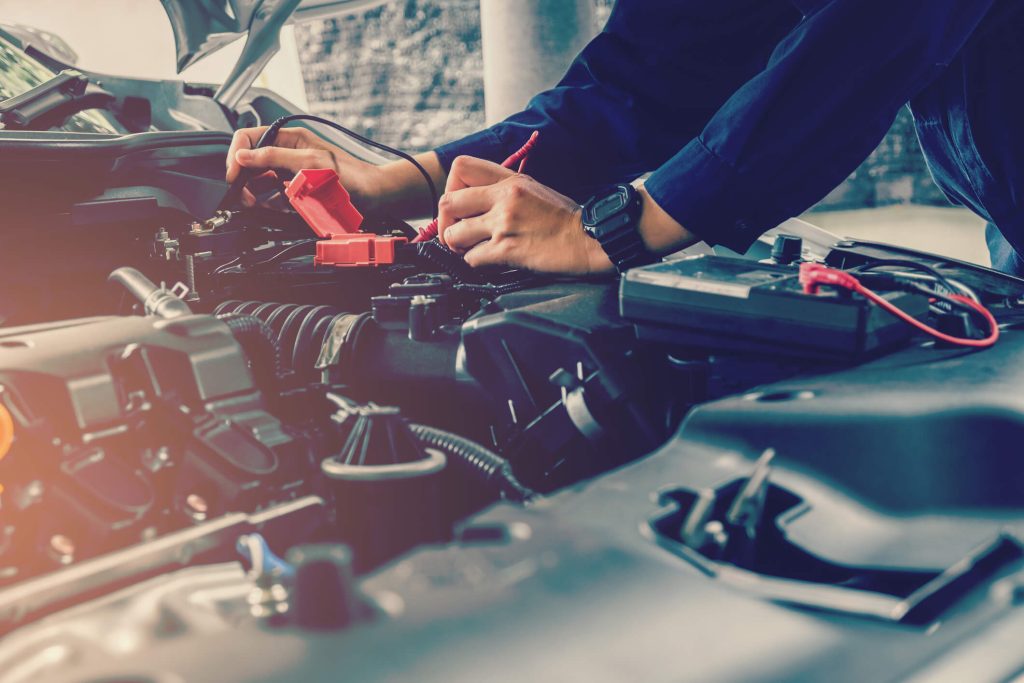In the automotive industry, merchant accounts play a crucial role in facilitating payment transactions for businesses. However, not all automotive merchant accounts are created equal. Some are considered high risk, while others are classified as low risk. Understanding the differences between these two types of accounts is essential for automotive merchants to make informed decisions and ensure the smooth operation of their businesses.
What are Automotive Merchant Accounts?
Before delving into the risk levels associated with automotive merchant accounts, it is important to understand what these accounts actually are. Automotive merchant accounts are specialized accounts that allow businesses in the automotive industry to accept credit card payments from their customers. These accounts are typically provided by acquiring banks or payment processors and are essential for businesses that rely on credit card transactions for their revenue.
Differentiating High Risk and Low Risk Merchant Accounts in the Automotive Industry

When it comes to automotive merchant accounts, there are two main categories: high risk and low risk. High risk merchant accounts are those that are deemed to have a higher probability of chargebacks or fraudulent activity. On the other hand, low risk merchant accounts are considered to have a lower likelihood of such issues.
The classification of an automotive merchant account as high risk or low risk is determined by various factors, including the nature of the business, its financial stability, and its credit history. Additionally, the industry itself can also contribute to the risk level, as certain sectors within the automotive industry may be more prone to chargebacks or fraudulent activity.
Below, we explore examples of high-risk and low-risk automotive merchant accounts, providing insights into what factors contribute to these classifications.
High-Risk Automotive Merchant Accounts

High-risk accounts typically involve higher rates of chargebacks, fraud, or are associated with industries that have a higher likelihood of financial instability.
Used Car Dealerships
Used car dealerships often face disputes over vehicle conditions or histories, leading to a higher risk classification.
Aftermarket Parts and Modifications
The niche and customized nature of these products increase the likelihood of customer dissatisfaction and disputes.
Auto Warranty Services
Extended warranties are long-term commitments with a higher potential for customer disputes over coverage.
Online Auto Parts Stores
The potential for incorrect parts orders and the anonymity of online transactions elevate the risk of chargebacks.
Automotive Auctions Online
High-value transactions and uncertainties about vehicle conditions contribute to a higher risk profile.
Low-Risk Automotive Merchant Accounts

Low-risk accounts are typically associated with industries that have lower chargeback rates and stable, transparent financial transactions.
Routine Maintenance and Repair Shops
These services are essential and straightforward, leading to fewer disputes and a lower risk classification.
Car Wash and Detailing Services
The immediate delivery of these low-value services results in lower risk of chargebacks and fraud.
Auto Parts Stores (Brick and Mortar)
Physical presence allows for direct verification of products, reducing the likelihood of disputes.
Dealerships Selling New Cars
The reputation of manufacturers and the presence of warranties reduce the risk of significant disputes.
Automotive Service Contracts (Brick and Mortar)
Direct sales of service contracts in a brick-and-mortar setting foster ongoing customer relationships, minimizing risk.
Factors that Determine the Risk Level of Automotive Merchant Accounts
Several factors come into play when determining the risk level of an automotive merchant account. These factors include the business’s credit history, financial stability, chargeback ratio, and industry reputation. Let’s take a closer look at each of these factors:
- Credit History: A strong credit history demonstrates the business’s ability to manage its finances and fulfill its obligations. A poor credit history, on the other hand, may raise concerns for acquiring banks or payment processors, leading to a higher risk classification.
- Financial Stability: Acquiring banks and payment processors assess the financial stability of a business to determine its risk level. Factors such as revenue, cash flow, and debt-to-income ratio are taken into consideration. A financially stable business is more likely to be classified as low risk.
- Chargeback Ratio: Chargebacks occur when customers dispute a transaction and request a refund from their credit card issuer. A high chargeback ratio indicates potential issues with customer satisfaction or fraudulent activity, leading to a higher risk classification.
- Industry Reputation: The reputation of the automotive industry as a whole can also impact the risk level of merchant accounts within the sector. If the industry has a history of high chargeback rates or fraudulent activity, acquiring banks and payment processors may classify automotive merchant accounts as high risk.
Common Challenges Faced by Automotive Merchants in Obtaining Merchant Accounts
Obtaining a merchant account in the automotive industry can be challenging, especially for businesses classified as high risk. Some common challenges faced by automotive merchants include:
- Limited Options: High risk automotive merchants may have limited options when it comes to choosing a payment processor or acquiring bank. Many traditional financial institutions are hesitant to work with high risk businesses due to the perceived higher risk of chargebacks or fraudulent activity.
- Higher Fees: High risk automotive merchant accounts often come with higher processing fees and additional charges. This is because payment processors and acquiring banks need to mitigate the potential risks associated with these accounts.
- Stricter Underwriting Process: The underwriting process for high risk automotive merchant accounts is typically more rigorous compared to low risk accounts. Businesses may be required to provide additional documentation, undergo background checks, or demonstrate their ability to manage chargebacks effectively.
- Rolling Reserves: Payment processors may impose rolling reserves on high risk automotive merchant accounts. A rolling reserve is a percentage of each transaction that is held by the payment processor for a certain period of time as a safeguard against chargebacks or other financial risks.
Benefits of Low Risk Automotive Merchant Accounts
Low risk automotive merchant accounts offer several benefits to businesses in the industry. These benefits include:
- Lower Processing Fees: Low risk accounts generally come with lower processing fees compared to high risk accounts. This can result in significant cost savings for automotive merchants, especially those with high transaction volumes.
- Faster Access to Funds: With low risk accounts, businesses can typically access their funds more quickly. Payment processors and acquiring banks are more likely to release funds promptly, allowing businesses to manage their cash flow more effectively.
- Greater Choice of Payment Processors: Low risk automotive merchants have a wider range of options when it comes to choosing a payment processor or acquiring bank. This allows businesses to shop around for the best rates and services that suit their specific needs.
- Enhanced Reputation: Being classified as a low risk automotive merchant can enhance a business’s reputation within the industry. This can lead to increased trust from customers and other stakeholders, ultimately benefiting the business’s bottom line.
Risks Associated with High Risk Automotive Merchant Accounts
High risk automotive merchant accounts come with inherent risks that businesses need to be aware of. These risks include:
- Higher Chargeback Rates: High risk accounts are more likely to experience higher chargeback rates compared to low risk accounts. This can result in financial losses for the business and potential damage to its reputation.
- Limited Options for Payment Processors: High risk automotive merchants may have limited options when it comes to choosing a payment processor or acquiring bank. This can restrict their ability to find the best rates and services for their business.
- Higher Processing Fees: High risk accounts often come with higher processing fees and additional charges. This can increase the cost of doing business for automotive merchants, impacting their profitability.
- Stricter Underwriting Process: The underwriting process for high risk automotive merchant accounts is typically more rigorous compared to low risk accounts. This can result in delays and additional administrative burdens for businesses.
How to Mitigate Risks and Secure a Low Risk Automotive Merchant Account
While high risk automotive merchant accounts come with inherent risks, there are steps that businesses can take to mitigate these risks and secure a low risk account. Some strategies include:
- Improve Credit History: Businesses should focus on improving their credit history by paying bills on time, reducing debt, and resolving any outstanding issues. A strong credit history can increase the chances of obtaining a low risk account.
- Implement Fraud Prevention Measures: Automotive merchants should invest in robust fraud prevention measures to minimize the risk of chargebacks and fraudulent activity. This can include using secure payment gateways, implementing address verification systems, and monitoring transactions for suspicious activity.
- Maintain Financial Stability: Demonstrating financial stability is crucial for obtaining a low risk automotive merchant account. Businesses should strive to maintain healthy cash flow, manage debt effectively, and provide accurate financial documentation to acquiring banks or payment processors.
- Partner with a High Risk Specialist: If a business is classified as high risk, partnering with a payment processor or acquiring bank that specializes in high risk accounts can increase the chances of obtaining a low risk account. These specialists have the expertise and resources to assess and mitigate the risks associated with high risk businesses.
Frequently Asked Questions
Q 1: What are the typical requirements for obtaining an automotive merchant account?
The requirements for obtaining an automotive merchant account can vary depending on the payment processor or acquiring bank. However, typical requirements may include a completed application form, business registration documents, financial statements, proof of identity, and a processing history for existing accounts.
Q 2: Can a high-risk automotive merchant account be converted into a low-risk account?
While it is possible for a high-risk automotive merchant account to be converted into a low-risk account, it can be challenging. Businesses need to demonstrate improved credit history, financial stability, and a track record of managing chargebacks effectively. Working with a payment processor or acquiring bank that specializes in high risk accounts can increase the chances of conversion.
Q 3: How can automotive merchants build a positive credit history to reduce risk?
To build a positive credit history, automotive merchants should focus on paying bills on time, reducing debt, and resolving any outstanding issues. It is also important to maintain accurate financial records and provide them to acquiring banks or payment processors when required.
Q 4: Are there any specific regulations or compliance requirements for automotive merchant accounts?
Automotive merchant accounts are subject to various regulations and compliance requirements, including those related to data security and privacy. Businesses must comply with the Payment Card Industry Data Security Standard (PCI DSS) and other relevant regulations to protect customer data and ensure secure payment transactions.
Q 5: What are the potential consequences of operating without a proper automotive merchant account?
Operating without a proper automotive merchant account can have serious consequences for businesses. They may face difficulties in accepting credit card payments, limiting their customer base and revenue potential. Additionally, operating without a merchant account can expose businesses to increased risks of fraud, chargebacks, and legal issues.
Conclusion
In the automotive industry, the risk level associated with merchant accounts can have significant implications for businesses. Understanding the differences between high risk and low risk accounts is crucial for automotive merchants to make informed decisions and ensure the smooth operation of their businesses.
Factors such as credit history, financial stability, chargeback ratio, and industry reputation play a key role in determining the risk level of automotive merchant accounts. High risk accounts come with inherent risks, including higher chargeback rates, limited options for payment processors, and higher processing fees. On the other hand, low risk accounts offer benefits such as lower processing fees, faster access to funds, and a greater choice of payment processors.
To secure a low risk automotive merchant account, businesses can take steps to mitigate risks, such as improving their credit history, implementing fraud prevention measures, maintaining financial stability, and partnering with high risk specialists. By understanding the requirements and challenges associated with automotive merchant accounts, businesses can make informed decisions that support their growth and success in the industry.
